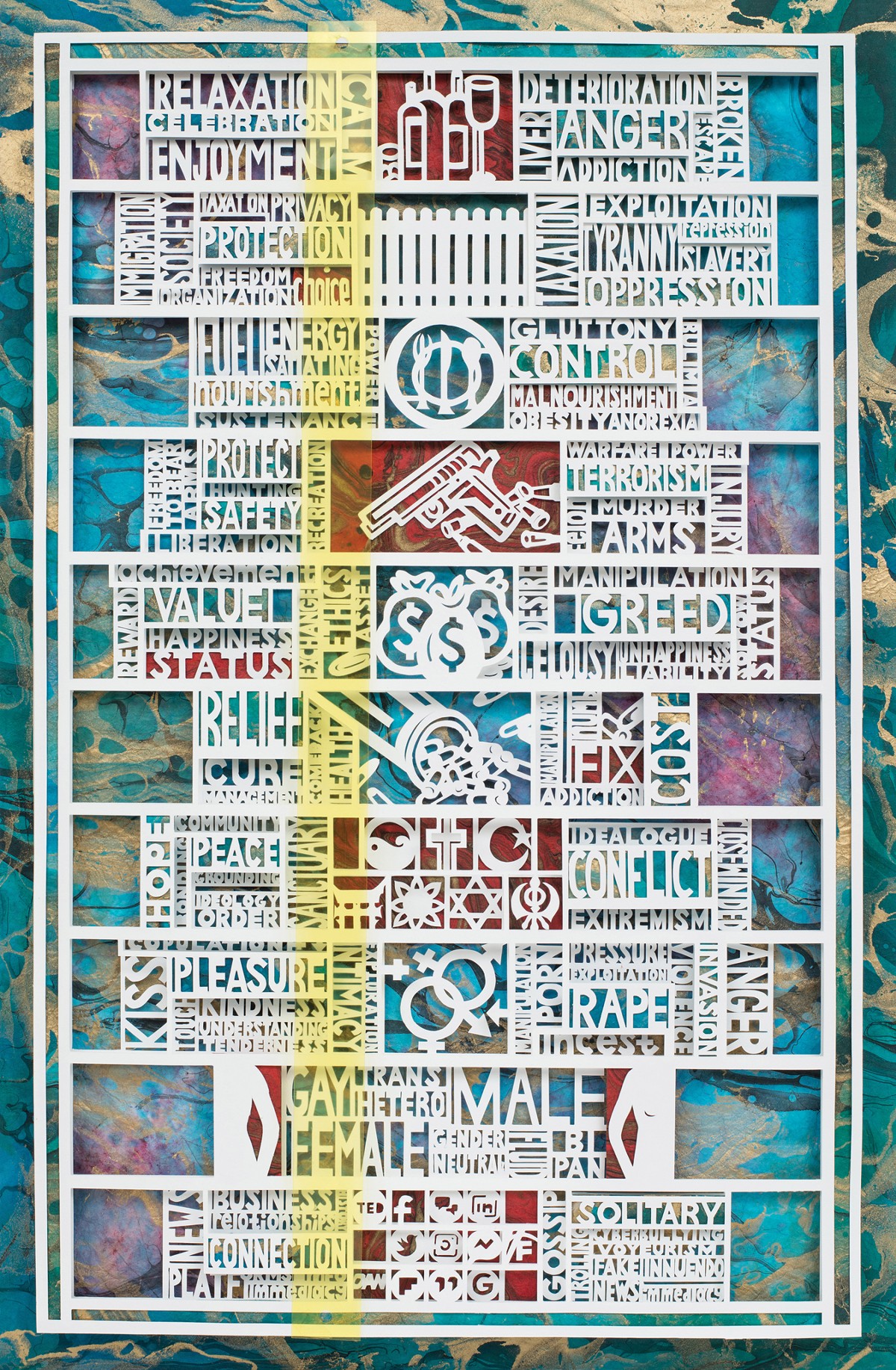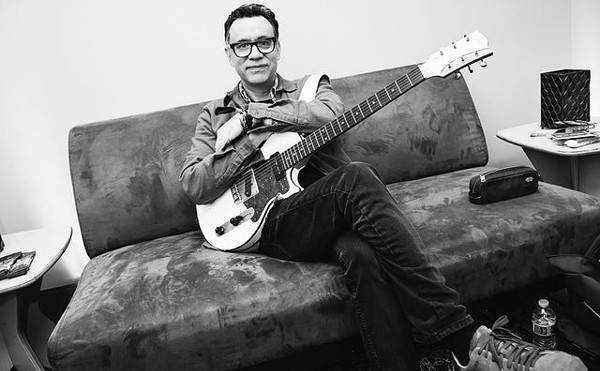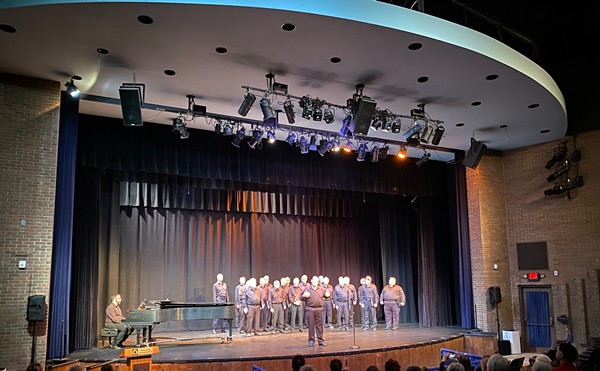Ever since the Egyptians invented papyrus and the eunuch Cai Lun standardized the production of paper, the support has been the basis for pretty much all art forms from the drawing table to modern sculpture. Scherenschnitte, the art of storytelling through the method of papercutting, has come a long way since simple Victorian silhouettes. The artist Kara Walker famously uses this technique to explore the big themes of race, gender, sexuality and identity. Mia Pearlman uses cut paper to create monumental sculpture and installations that boggle the mind.
Relatedly, Nancy Schwartz-Katz's latest exhibition, Borders and Boundaries, at the Shaker Community Gallery, caught our eye immediately. She acquires paper from all over the world that serve as layers of color to background the bright-white cut pieces. Schwartz-Katz, who has specialized in Jewish art for over 25 years, is investigating different techniques.
"This is a newer kind of work for me, " she says. "It has given me a chance to explore themes that are going on in today's world, to try and get people to think in a way that's out of the box or in a way that they haven't thought before."
Traditionally an illustrator, she studied at the prestigious Parsons School of Design and worked with the Pushkin Group. She explained that she is now getting back to her roots. She takes cues from the late Miriam Schapiro and Elizabeth Murray's large works of the late 1970s and an interest in the Nabis at the turn of the century. "I love that humanistic approach and I feel like I'm just starting to approach it. I do a drawing a day, but this allows me to push the envelope creatively in a way I haven't seen."
Hanging on the south wall are four water-based gouache paintings. More opaque than watercolor and more forgiving than acrylics, gouache has a quality all its own and is a perfect choice for these particular paintings. On these oblong pieces, Schwartz-Katz tells the story of the Bible. The works were created site-specific for the Denis Library at Bnai Jeshuran. The Nabis influence is evident here. The artist, through symbolism, chronicles the stories of creation, Moses, Joseph and Esther. Each piece is striking and set us on a thoughtful walk through each chapter. "With gouache, I like to layer the color in order to form one image to the next, keeping the look clean, clear and intentional," says Swartz-Katz. "My vivid layering of the gouache conveys a feeling of watercolor. The liveliness and richness of gouache tones also benefit the theatrical quality of my art."
Across the gallery we see Schwartz-Katz's latest papercut work. In "Duality of Slavery and Freedom in the Modern World," the artist talks about how we have become slaves to technology. Gears, planes, space shuttles, trains and other means of transportation are intricately cut with a Rorschach test sensibility.
As we move along the wall, we are blown away by the technical skill displayed in "Dichotomy," a piece birthed from a conversation with her children. Here we see three figures, presumably a mother and her two children, separated (or perhaps bound) by a wall of words. The discussion certainly begins with the parent; the dialogue seemingly flowers from her coffee mug, and we literally see each figure's thoughts. Mind you, these are all hand cut with a knife. We can't even imagine how long this particular papercut collage might have taken. "Dichotomy" is quite the theatrical tete-a-tete.
In "Borders and Boundaries," the show's title piece, Schwart-Katz contemplates our boundaries and who is responsible for them. Anger, control, greed, relief, conflict, pleasure — the words are bordered within themselves, split by the major arcana of current events, including gun control, health care costs, gender identity and walls. Here, the artist chooses background colors that are more subtle and fluid.
"I am a storyteller through my art," she says. "It depends on what the subject matter is. I think about the iconography that comes along with the subject and I'll do reading and I'll research. It allows me to explore in a different way. I use my illustration background to work on the imagery. I am a very precise person, I like order; I'm very meticulous with the cutting of the knife, the feeling of getting in there and working with the brush or the knife."
Interestingly, both styles of artwork were created at the same time, which proves that an artist need not be tied down to a particular style. Schwartz-Katz explores this freedom as she advances her work in this wonderful exhibition.
"Distance and Time" contemplates the death of a friend, which pushed Schwartz-Katz to write a poem about life's journey and each person's pathway through it. Our eyes dance just above the green background as we wander through the landscape, following the poem's trail in this peaceful artwork.












